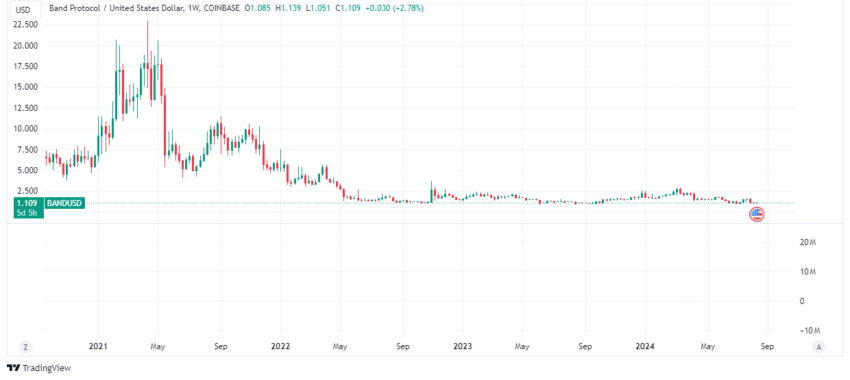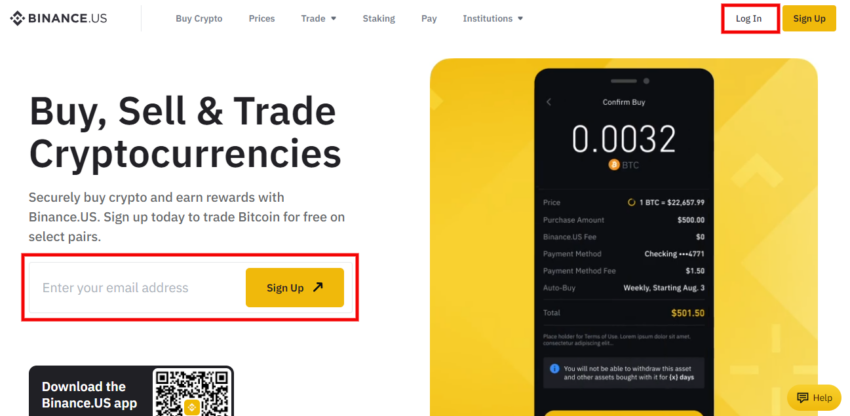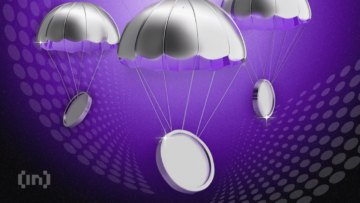Band Protocol is a cross-chain data oracle that brings its services to the vast world of decentralized applications (DApps). But how does Band Protocol source reliable data to the blockchain? We answer this question and more in this guide.
KEY TAKEAWAYS
• The Band Protocol is a blockchain oracle that brings off-chain data on-chain.
• It was originally launched on the Ethereum blockchain but eventually transitioned to its own, Bandchain.
• Bandchain was built using the Cosmos SDK and uses a delegated proof-of-stake (dPoS) mechanism.
What is Band Protocol?

Band Protocol combines real-world data with APIs to create smart contracts. It is built on BandChain, a Cosmos SDK-based blockchain that can be used with any smart contract and blockchain development platforms. Band Protocol uses a delegated proof-of-stake (dPoS) consensus mechanism to ensure data integrity.
The network is designed for offloading heavy and resource-intensive tasks, such as retrieving data from external sources. This prevents network congestion or high transaction fees on the destination networks. Additionally, the same data points can also be packaged and used across multiple blockchains.
The flexible design of the API allows developers to query a wide range of data types, including:
- on-chain data (e.g. token balances, transaction data, etc.)
- real-world events (e.g. weather, flight status, sports scores, etc.)
- any data available via the internet (e.g. stocks or cryptocurrency price)
Since the launch of GuanYu mainnet, there has been an expansion in the protocol. This includes applications offering both on-chain and real-world data. Some of the applications using the Band Protocol offer lending and money exchange services, while others operate in the gambling or asset and tokenization spaces.
The Laozi upgrade (phase 2) focused on increasing the usability of the protocol. The two main focus points were on-chain payments for data providers from developers and implementing the inter-blockchain communication (IBC) standard. The IBC allows cross-chain oracle requests.
Considering all these updates, the Band Oracle is able to offer developers an important set of products and services. These include blockchain oracles, verifiable randomness functions (VRF), and cross-chain communication.
History of Band Protocol
Band Protocol was initially released on the Ethereum blockchain, in 2017. The mainnet was launched on Sep. 30, 2019. However, in 2020, Band Protocol 2.0 was built on its own blockchain, BandChain, using the Cosmos SDK. It experienced rapid growth in 2020 after making the switch to Band Protocol 2.0.
Band Protocol was founded in 2017 by MIT graduates Soravis Srinawakoon, Paul Nattapatsiri, and Sorawit Suriyakarn. Srinawakoon and his friends developed a cryptocurrency gambling website, which doubled as a Bitcoin faucet. It rewarded users with Bitcoins for winning casino-style games. Srinawakoon sold the website and used the funds to develop Band Protocol.
He noticed that large communities tend to have low-quality interactions due to the lack of accountability and misinformation. That led to the creation of Band Protocol. It was initially designed to provide accurate and reliable information to online blockchain communities. Over time, the protocol shifted its focus, as the team realized that all the emerging technologies can’t function without real-world data.
Roadmap and development history
The Band Protocol had 2 ICOs, and 1 IEO. During the first ICO in August 2018, 10 million BAND tokens were sold for $0.30 each. This raised a total amount of $3 million. The second ICO, which was private, took place in May 2019, selling 5 million BAND tokens at $0.40 per BAND. It raised $2 million.
Band Protocol’s IEO raised $5.85 million, its most successful round of funding. The Binance Launchpad saw the sale of just under 12.4 million (12.37% of the total supply) BAND tokens at $0.473 per BAND. Since the original version of the Band Protocol was developed on Ethereum, all BAND tokens that were sold in the ICO or IEO rounds were ERC-20 tokens.
According to the Band Protocol roadmap, BandChain’s mainnet release is planned in four phases:
- Phase 0 (Wenchang). Launched in June 2020. This phase is now deprecated. During phase 0, Band Protocol validators were able to transfer BAND tokens from the Ethereum blockchain to the new Bandchain and stake them.
- Phase 1 (GuanYu). The Oracle-WASM was released on the mainnet, to support built-in and custom Data Oracle Scripts. Inter-blockchain communication (IBC) was added to communicate between Cosmos and EVM blockchains. Phase 1 was completed on Oct. 15, 2020.
- Phase 2 (Laozi). This is the current stage of the project. It aims to allow API providers to trustlessly sell their data on-chain and earn revenue on-chain. It also focuses on improving compatibility between different blockchains.
- Phase 3 (Confucious). A research phase focused on creating more payment options in the ecosystem, supporting a peer-to-peer authentication gateway, and releasing a standard for smart contract interoperability with enterprise software.
How does Band Protocol work?
Band Protocol acts as an intermediary between off-chain internet data sources and blockchains. It handles data requests from DApps and relays the information using data feeds from other parts of the internet. It does this by using its own blockchain, which allows all transactions to be validated and publicly verified.
According to the Band Protocol team, this helps ensure that the data users provide isn’t altered, falsified, or otherwise compromised.
One important component of the protocol is its validators. They are responsible for verifying that transactions on Band Protocol are correct and for adding transactions to the Band Protocol Blockchain.
To become a validator, users must own BAND. You can buy the protocol’s native coins from cryptocurrency exchanges. Users can also delegate their coins to validators and receive a part of the validator’s rewards.
The network selects the top 100 candidates who have the most BAND to become validators. They must adhere to specific rules such as:
- Responding to network events
- Confirming transactions
- Remaining available online (liveness)
When a validator breaks any of those rules, they risk losing a part of their BAND.
Band Protocol (BAND) vs. Chainlink (LINK)
As the world rapidly shifts from web2 to web3, an increasing number of internet applications will need the services of an oracle that can provide reliable real-world data. Band Protocol is one of the main competitors to Chainlink, the most popular decentralized oracle in the blockchain space.
At their core, both protocols are decentralized blockchain oracle providers that use smart contracts to deliver real-world data. However, one of the most important differences between the Chainlink and Band Protocol is their networks.
Chainlink is built on the Ethereum blockchain, but Band Protocol now has its own blockchain, BandChain. The blockchain used is important, as Cosmos helps Band Protocol to keep its transaction costs low, when compared to Ethereum’s transactions.
Cosmos is often regarded as a fast and interoperable blockchain solution, which means that data from different blockchains can be easily fetched and sourced through smart contracts for your specific application.
| Band Protocol | Chainlink | |
|---|---|---|
| Network | Bandchain (Cosmos SDK) | Ethereum |
| Services | Oracle, VRF, bridging | Oracle, VRF, bridging, proof of reserves |
| Ticker | BAND | LINK |
| Total supply | ~149,000,000 BAND | 1,000,000,000 LINK |
Both projects have growing ecosystems
As of December 2024, the Band Protocol has partnered with over 70 projects, including the Mirror protocol. It also supports big-name exchanges, including Binance, Coinbase and Uniswap.
Chainlink has a total supply of 1 billion LINK tokens, and over half of that amount is already circulating. The project has numerous partnerships, including big names such as Aave, dYdX, Synteticx, PancakeSwap, Google Cloud and PayPal.
While Band Protocol is cheaper to use, Chainlink is still the most popular project and is considered the default protocol by developers.
BAND tokenomics

BAND is the native crypto of BandChain. The chain incentivizes validators to create new blocks and respond to data requests using BAND. The coin has three main use cases within the Bandchain network:
- Tokens can be used to deploy a validator node
- Delegated to other validators to earn inflationary rewards and a portion of the collected fees
- Participate in the governance of the chain
BandChain uses an inflationary model for the BAND coin. This model aims to encourage BAND holders to delegate their crypto to network validators. The inflation parameters are currently identical to those of the Cosmos network. They include a range of 7% to 20% annual inflation and an adjustment to ensure that 66% of the total BAND supply is staked.
Imagine a network participant who has a certain amount of BAND. If they decide not to use their crypto for the network’s activities, they will see a decrease in their holding relative to the total supply. If they choose to stake their crypto, they will receive a proportional share to the inflation. Their total holding ratio will therefore remain relatively constant.
According to ICODrops, the BAND supply distribution is as follows:
- Seed sale – 10%
- Private sale – 5%
- Launchpad sale – 12.37%
- Ecosystem development – 25.63%
- Team – 20%
- Advisors – 5%
- Foundation – 22%
BAND price predictions

As of December 2024, the price of BAND sits at around $1.11. According to CoinMarketCap, BAND reached its all-time high on Apr. 15, 2021, when it hit $23.19. While it is difficult to determine the future price of any asset, you can check out our BAND price prediction from our experts at BeInCrypto.
How to buy BAND?
After you’ve done all your research, you might be wondering how to buy BAND. Luckily, you can do that in a few easy steps. To buy BAND, simply:
- Choose a crypto exchange.
- Create an account.
- Verify your account to add a payment method.
- Buy BAND on the exchange.
For a more in-depth, step-by-step guide to buying BAND, continue reading below.
Step 1. Choose a cryptocurrency exchange
Before you can buy BAND, you need to find a crypto exchange that has listed it. You can find the list of all available markets on BeInCrypto.
Some of the most popular exchanges for buying BAND are Binance, Coinbase, and Crypto.com. In this example, we will use Binance to buy BAND. You can also use Coinbase, which is often regarded as the most beginner-friendly cryptocurrency exchange. However, note that Coinbase only supports the BAND token running on Ethereum (ERC-20), not the BAND coin on Bandchain.

Step 2. Create an account
If this is your first time buying cryptocurrency, you will need to create an account on the chosen crypto exchange. Setting up an account on Binance is easy and only requires a few clicks. Click on Register and enter all the information needed.

Step 3. Verify your account
Before you can purchase cryptocurrency with your credit or debit card, you will need to verify your identity. This is the case with most centralized crypto exchanges that allow direct crypto purchases with fiat. To get verified, you will have to provide your ID and tax information, as well as proof of your home address.

Step 4. Buy BAND token
After your account gets verified, go to Buy Crypto and select Credit/Debit Card (not available for U.S. customers). You can select your fiat currency and the desired crypto.
After you’ve entered all the details, click on Continue. You will have to activate Fiat Service, which allows the Binance service provide to access your private information.

After your fiat service is activated (it only takes a couple of seconds), you will see all the details of your transaction. You can also input the details of your credit or debit card here, if you haven’t already.

Click on Continue when you’re ready.

Here you will see the exact price per USDT token, the transaction, and the total amount you’ll pay. If you’re happy with all the details, click on Confirm before the quote expires and you will finalize the transaction. It should only take a few moments to see the tokens in your account. You will also receive an email confirmation of your purchase.
How to stake Band Protocol token
As stated previously, the Band Protocol uses a delegated proof-of-stake (dPoS) consensus mechanism, which requires users to stake their tokens to ensure the continuity of the blockchain. So, how do you stake BAND tokens? The easiest way to stake BAND tokens is to use Binance Staking.
Step 1: Choose a platform
Go to the Binance website. There are many other options available, and non-custodial crypto wallets that make it easier for anyone to stake BAND tokens, including Cosmostation and Atomic Wallet.

Step 2: Select a staking period and amount
On Binance, you can only stake BAND tokens under Locked Staking. You can select between 30 and 60 days to stake BAND. Click on Stake Now and enter the amount of BAND tokens you want to stake. The minimum amount is 20 BAND.

Step 3: Review your order details
After you review all the details, click on Confirm. You will receive a notification from Binance saying that your transaction was successful. You can see your stake in your Wallet > Earn section.

Step 4: Wait for the interest to collect
To collect your interest, you will have to wait for the 30 or 60-day term to end. However, you can redeem your deposit earlier. In that case, you will not receive any interest on your deposit. That’s how you can stake BAND tokens on Binance.

Is Band Protocol the future of decentralized oracles?
DeFi’s rapid growth rate means that more decentralized applications will be released in the future. Many of these require reliable off-chain data sources. While Chainlink is the default oracle for Ethereum-based applications, other DApps based on other blockchains also require decentralized oracles to source their data. In this case, Band Protocol is an excellent contender for the role.
Frequently asked questions
What is Band Protocol?
Will Band Protocol (BAND) price go up?
Who uses Band Protocol?
Why is Band Protocol important?
Disclaimer
In line with the Trust Project guidelines, the educational content on this website is offered in good faith and for general information purposes only. BeInCrypto prioritizes providing high-quality information, taking the time to research and create informative content for readers. While partners may reward the company with commissions for placements in articles, these commissions do not influence the unbiased, honest, and helpful content creation process. Any action taken by the reader based on this information is strictly at their own risk. Please note that our Terms and Conditions, Privacy Policy, and Disclaimers have been updated.




